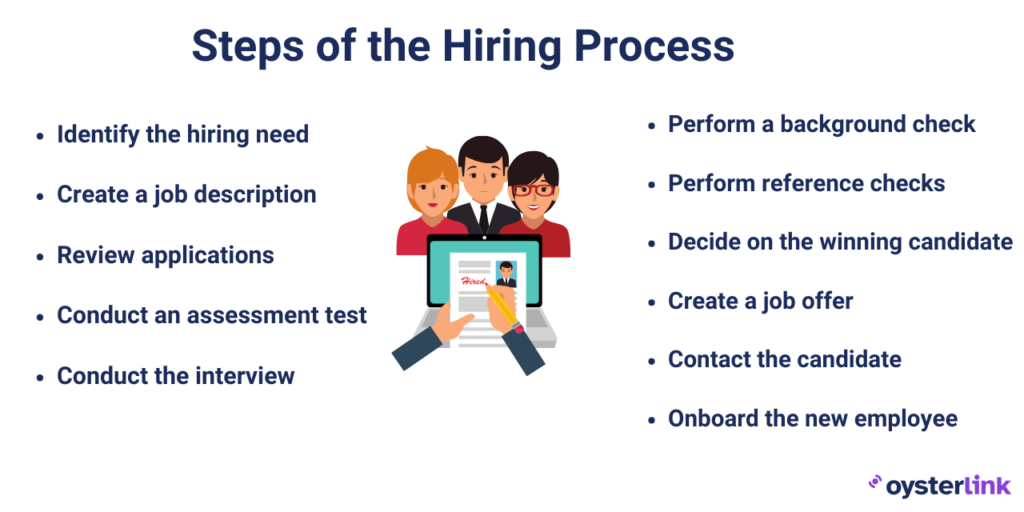83% of Sales Candidates Want a Clear Hiring Timeline: Here’s How to Give it to Them
Published on Aug 15, 2024

Put yourself in a sales candidate’s shoes for a second. The average person is eager to find a sales position and ready to start ASAP. They’re also likely facing a lot of uncertainty that could make them anxious. The last thing they want is any vagueness with the hiring process.
In fact, this could easily result in them jumping at another sales position, where you lose out on top-tier talent to a competitor. A simple way to avoid this problem is to provide sales candidates with a clear hiring timeline so they know exactly what to expect.
Why It’s Important to Have a Clear Hiring Timeline
Almost everyone knows what it’s like to be in job search mode. I know I do.
You’re busy sending out resumes and cover letters, filling out applications, and corresponding with hiring managers. There’s a lot going on.
When you find a prospective employer that looks promising, your goal is to quickly build rapport and swiftly move through the hiring process. From initial screenings to interviews to follow-up conversations to ultimately getting an offer and beginning onboarding, you want to navigate through this sequence of steps seamlessly.
But what if you find what seems like an amazing employer but they have absolutely no transparency in terms of what to expect with the hiring process? This can be incredibly frustrating, and many would-be superstar salespeople may be lost because of it.
Having a clear hiring timeline is essential because this provides the structure that lets sales candidates know for certain what’s about to happen. And this is something that most people crave, with research finding that “83% of candidates prefer having a clear timeline of the hiring process.”
But it goes deeper than that and is beneficial for your hiring team as well. This quote from ClearCompany summarizes it perfectly.
“Without a hiring timeline, you’re essentially creating a new process every time you hire. You can’t tell candidates — or your internal teams — when a decision will be made. Everyone, including your recruiting team, is in the dark. That’s frustrating for employees and candidates alike.”
With that said, here’s a straightforward strategy for giving sales candidates the clear hiring timeline they seek.
Outline the Sequences of Your Hiring Stages
First, you’ll need to articulate the exact series of steps involved in your sales hiring process. This can look slightly different from company to company, but here are two examples that you can build your outline around.
This one is quite simple and involves five basic steps.
- Verify a candidate’s information
- Interview them
- Evaluate their skills
- Perform employment verification
- Make your hiring decision
The other example is a little more involved with additional steps, but it should provide a thorough hiring process that increases your chances of finding the ideal sales candidate.

I suggest spending some time looking at these two examples and considering any other steps that are unique to your hiring and fleshing out a concrete process. Also, be sure to include roughly how long each step will take so that candidates and your sales hiring team know.
For example, you may mention that candidates can expect to hear back from you within three days after conducting an assessment test to schedule an interview.
Keep in mind that you can (and probably should) make changes as time goes on. But this should serve as a solid first draft so you can be on the same page with sales candidates. This brings us to our next point.
Provide an Overview of the Hiring Timeline to Sales Candidates
Once you’ve got a finished product, you’ll want to type up a tangible outline that you can give to sales candidates, as well as your hiring team. Here’s a simple example that I came up with off the top of my head.
| Application Review and Screening | 1 week |
| Initial Phone Interviews | 3 days |
| In-Person or Video Interviews | 3 days |
| Reference/Background Check | 3 days |
| Offer and Negotiation | 1 week |
| Onboarding | 2 weeks |
Notice that this not only shows the precise sequence of steps that will occur in the hiring timeline but also the approximate length of time with each step. And in the spirit of underpromising and overdelivering — which I find to be highly important in hiring and business in general — it’s best to give yourself some wiggle room with dates.
For instance, it would be better to tell candidates to expect it to take a week to receive an offer after conducting a reference/background check and it only takes five days to get back to them rather than promising three days and it taking you five.
In terms of the tools for creating a clear hiring timeline, a basic spreadsheet should be sufficient. However, you can find free, customizable templates here that have stronger aesthetics.
Track Progress and Make Adjustments
After you’ve identified the hiring timeline, created a tangible outline, and started implementing it, be sure to track your progress and measure the results.
Here are some specific quantitative KPIs to look at:
- Time to fill
- Time to hire
- Interview-to-offer ratio
- Offer acceptance rate
- Quality of hire
- Cost per hire
- Employee retention
It’s also important to dive into qualitative metrics that rely less on numerical data and more on feedback. Mainly, I suggest getting direct candidate input on what their experience is like so you can identify pain points to fix. It’s also smart to get direct input from your hiring team to see how satisfied they are with the process and what could be improved.
Optimizing Sales Recruiting with a Clear Hiring Timeline
Given that 83% of sales candidates like having a clear hiring timeline it’s definitely worth your time to provide them with one. And it’s really not that complicated and only involves three steps.
Outline your hiring stages. Provide a concrete overview of those stages to sales candidates and your hiring team. Make ongoing improvements as you gather data.
Do that, and you should be on your way to creating an amazing sales candidate experience, which should result in more quality hires, increased ROI, and greater retention.
If you’re looking to eliminate weaknesses in your sales recruiting, try out our Hiring Readiness Assessment. It can help lower your recruiting costs, expedite your time to fill, and dramatically reduce poor hires.
